5 Pets that Won't Make Your Kids Sneeze
Having allergies doesn't mean your child can't own a pet. It only means you may have to do some extra research to choose a pet that won't trigger his allergies.
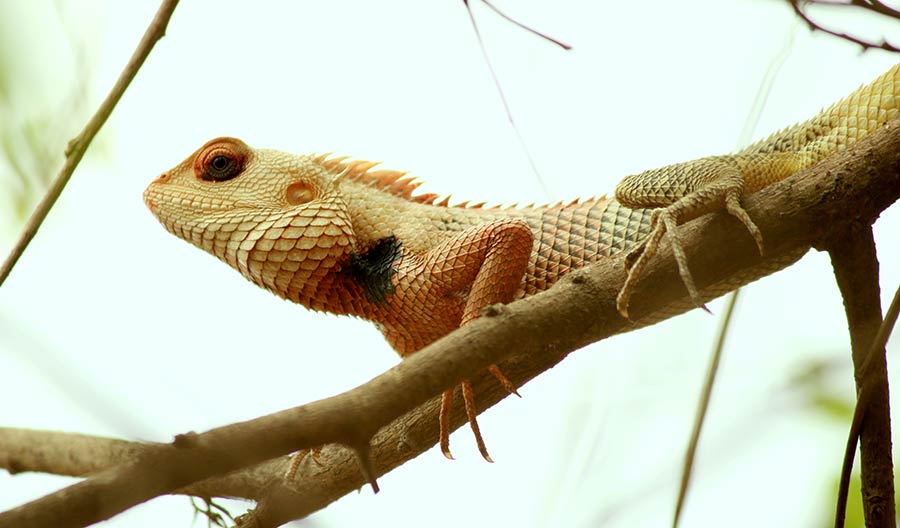
What triggers allergies? Usually, the triggers are air borne allergens such as dust, mold, or fomites like dander. Dander is the loose, discarded skin from pets like dogs or cats. Saliva and dander are the top two allergens that worsen kids' allergies. Cat saliva is especially problematic.
Lizards are good pets for kids with allergies. Because they don't have fur or feathers, they don't have dander. Let's take a look at some captivating creatures that won't make your kids sneeze or wheeze.
Meet the Lizard Family
Lizards belong to the Reptilla (Reptile) group and the Squamata order. If the word reptile makes you shudder and think of snakes, don't worry. Lizards and snakes are relatives, but lizards come from the more likeable side of the family tree.
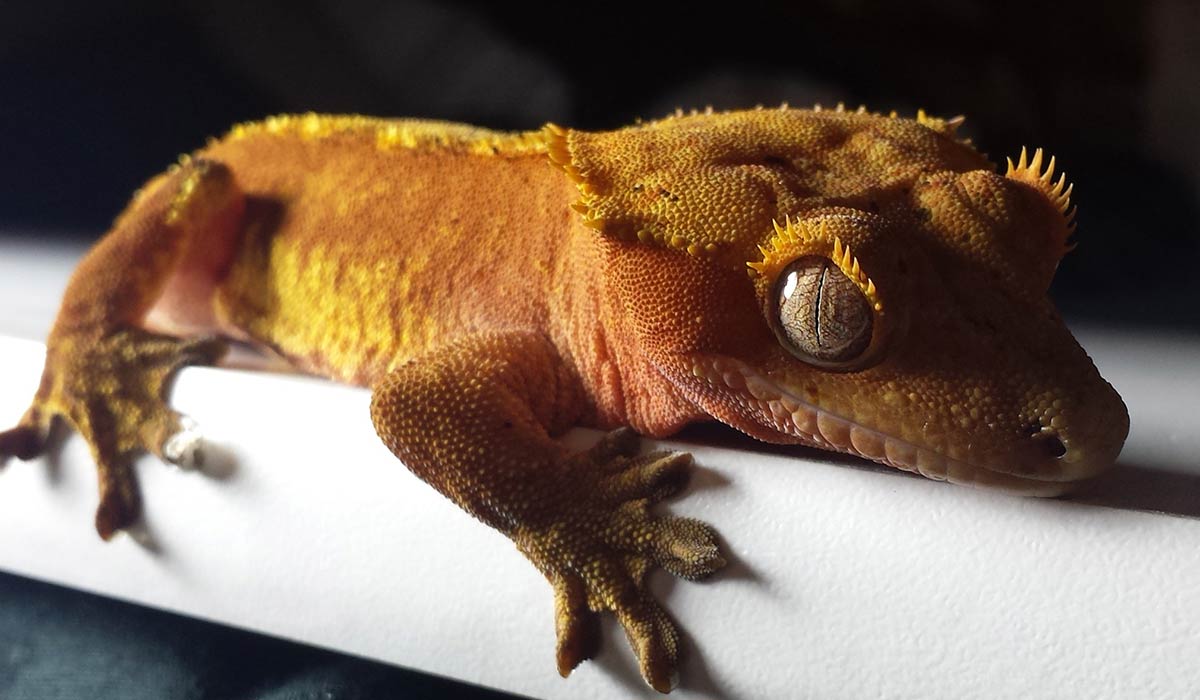
- General Appearance
- Most lizards share these common characteristics:
- Small heads
- Short necks
- Moveable eyelids*
- Elongated bodies
- Tails
- Visible ear openings
- Dry, scaly skin
*Geckos don't have eyelids: they can't blink! Instead, a clear membrane covers the eyes and acts as a protective shield.
Understanding Lizards
Geckos, a popular member of the reptile family are good non-allergenic pets. Additionally, they are small, so you won't need a huge cage or terrarium. Most have easygoing temperaments and are easy to care for. Finally, they aren't picky eaters, so your grocery bill won't skyrocket.
Which Gecko to Choose
Of the over 4,000 species in the reptile family, geckos tolerate handling the best. That's a good thing, because most kids want a pet they can touch or hold.
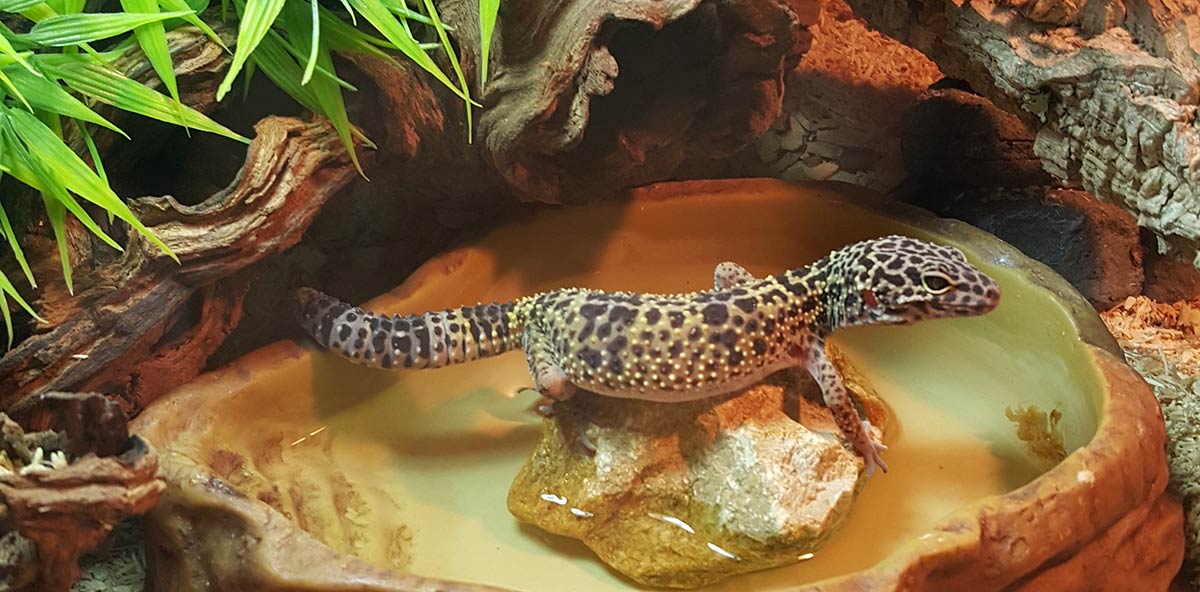
Leopard Geckos as Pets
Leopard geckos are the most popular pet geckos. They have all the other favorable gecko traits, and their care and maintenance needs are few. Thus, children may not become bored with caregiving as fast as they might with another pet.
These geckos are available in a rainbow-colored variety of skin tones and patterns. Their names come from the black and brown leopard-like spots on their skin. And, who can resist their happy, smiling faces?
These hardy pets won't cost you a lot for veterinarian care. Additionally, most are non-aggressive. So, you won't have to worry about your child getting scratched or bitten. Like other geckos, they are docile. Touching and holding does not irritate or stress them. In fact, their small size makes them good pets for small hands. They exist in almost any habitat, thus ending the need for specialized environments.
Social Aspects
They are congenial and social. In fact, females co-exist well. You can also house a male and a female, or several females, and they will live in relative harmony. Unfortunately, males are not compatible with other males.
Note: Leopard geckos are easy breeders. If you own a mated pair, you may come home from work to find hatchlings.
Balancing Feeding and Nutrition
Since they are insectivores, all you'll need to do is dust their insects with calcium powder. This simple step will keep them healthy. For an occasional treat, give them silk or wax worms. A nice plus is they only need to feed about three times a week, so if a child forgets a feeding, the pet won't be at risk.
Parental Perks
Finally, from a parental perspective, you may end up as the pet's caregiver. Kids mean well but may not keep their commitments. You'll be glad you're not scooping poop or taking long walks after an exhausting day at work. Leopard geckos confine their bathroom activities to one consistent spot in their terrarium. So, cleaning duty is quick and easy.
The only downside to gecko ownership is they are nocturnal. They'll be sleepy and adorable during the day, but they make keep you awake at night with their activity. Because leopard geckos are popular pets, they are readily available and usually inexpensive.
Other Kid-Friendly Lizards
Gold-Dust Day geckos and Crested geckos are other lizards to investigate. Yet, these are not the best pets for small children as they can lose their tails if stressed. They are a better choice for older children who can be taught how to handle them. Their attractive and unique appearances make them good look-but-don't touch (often) pets.
Blue-tongued skinks
We've made the case for geckos being excellent pet choices. But, there are other members of the reptile group that also make good companions. Let's consider the blue-tongued skink, which is also called a blue-tongued lizard or a bluey.
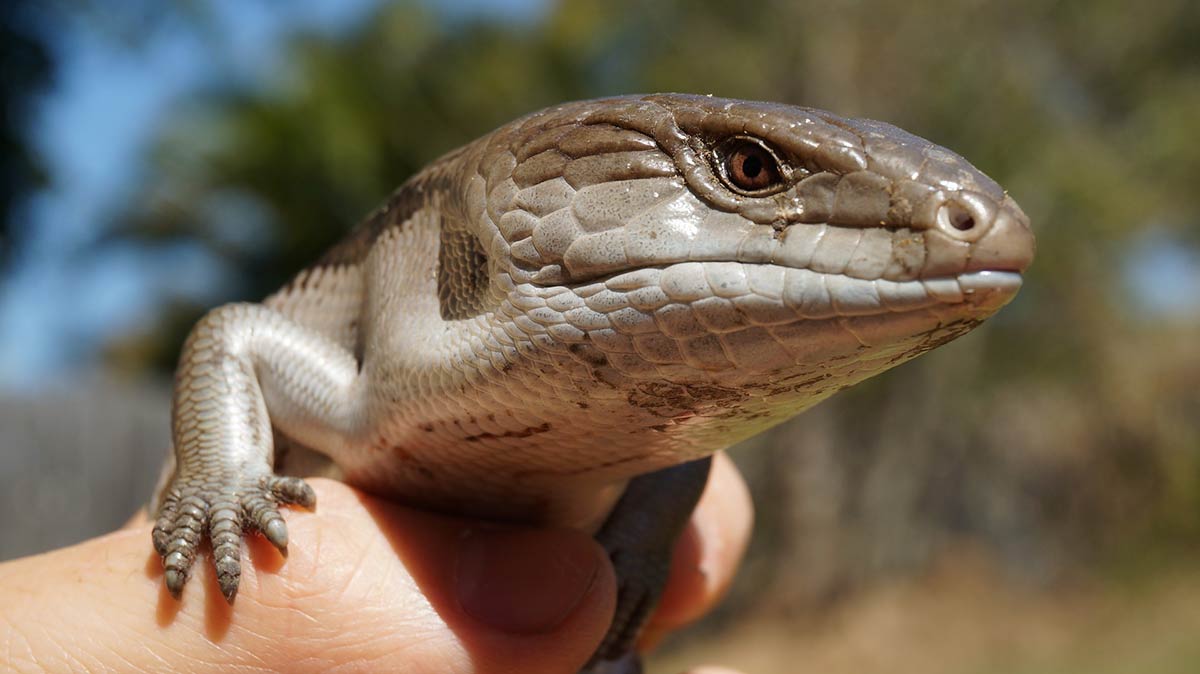
It might be love at first sight when your child sees this creature's brilliant azure tongue. Blue-tongued skinks belong to the skink family and are often captive-bred and sold as pets. That means if your child has his heart set on owning one of these beauties, it should be easy to find one.
Kid-friendly Traits
Their average lifespan is longer than that of other lizards, so they can “grow” old with your child. Their amiable personalities make them popular as pets. In fact, they enjoy having their heads and chins scratched. So, they are excellent interactive pets for kids.
General Appearance and Characteristics
At around 18 to 24 inches, they are one of the bigger lizards. Besides their colorful tongues, they have short, stubby legs. They are most active during the day (so you won't have to worry about being kept awake at night. Their omnivorous diet is satisfied with insects, foliage, fruit, and berries.
Reptile or Amphibian?
We've been extolling the virtues of reptiles as pets. But, what about other species that also make good pets?

While they look similar, skinks and salamanders are not the same species. Skinks are reptiles; salamanders are amphibians. The major differences are skin composition and size. Skinks have dry skins; salamanders have moist skins. Skinks can grow quite large; salamanders are usually small.
You can feel comfortable about your child having a salamander as a pet. But, which salamander should you choose?
Tiger salamanders are one of the best beginner exotic pets. They are the largest members of the salamander family. But, when grown, they are only about 14 inches long.
Kid-Friendly Features
What other attractive traits do they have? They are hardy pets that tolerate handling. Tiger salamanders have gentle temperaments and are not known to bite. Since they are willing to eat most things, they aren't expensive or hard to keep. As carnivores, they need tasty morsels like worms, snails, or slugs. They also eat other salamanders, frogs, or tadpoles. On the plus side, they don't need much food. It may be more difficult to make sure you don't overfeed them than it is to keep food on hand.
With the right handling, they may even become tame enough to take their food from your child's hand. Imagine your child's delight!
Coloration and Patterns
Tiger salamanders are available in a decent range of colors and patterns. The most common color/pattern features yellow spots on a dark background. Other variations are yellow vertical stripes on a dark background. These salamanders are called “barred” tiger salamanders. Those with blotchy, irregular yellowish spots on a dark background are known as blotched tiger salamanders.
Behavior and Lifespan
Like most salamanders they like to hide, but they are not shy. Some tiger salamanders live around 25 years in captivity; the average lifespan is 10 to 11 years. Thus, they can provide kids with many years of friendship and entertainment.
All the lizards mentioned here have plenty of positive traits to make them good pet. However, they may not appeal to your family. Here's a bonus pet profile of another popular reptile. Its unique appearance and personality may be just what you are looking for.
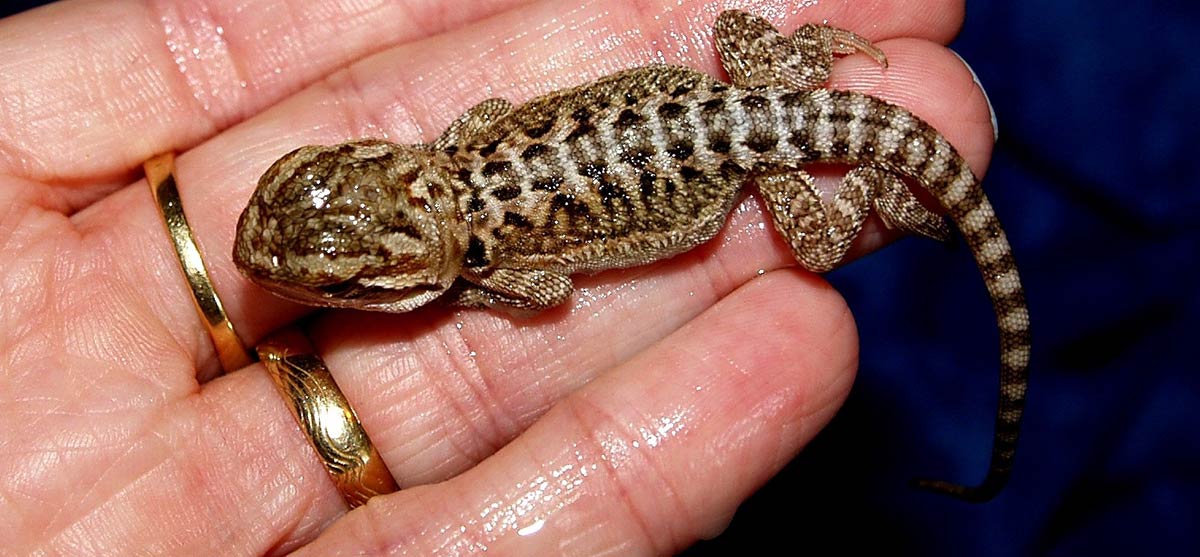
Own a Pet Dragon
As pet dragons go, bearded dragons are the gold standard for an easy-to-care-for pet. They derive their name from the spiny ruff around their neck, which makes them look menacing. However, these odd-looking dragons are docile. Owning a dragon will give your child bragging rights with his peers.
Temperament and Habits
Some bearded dragons, aka beardies, are quite affectionate with their owners. They are diurnal, so they are way more active during the day. You can rest assured your beardies won't keep you up all night with their antics.
Housing and Life Span
Most bearded dragons live for around 8 to 10 years. While not the longest life expectancy of the reptiles mentioned before, it's still a reasonable amount of time.
Expect yours to grow to a manageable size of about 14 to 24 inches. On the downside, they do need special lighting and controlled heating. Hence, they tend to be more expensive in terms of habitat requirements.
Kid-friendly Tips and Feeding
Adults are hardy, so children can handle them. Their babies are fragile and inexperienced handling could hurt them. Beardies are omnivores. You'll have to have a good supply of insects as well as fresh greens and vegetation on hand.
Care Considerations for Exotic Pets
There's more to owning a pet than the purchase price. Specialized lighting, heating or other adaptations may be expensive. You'll have to know what, how much, and when to feed your pet.
If your pet gets sick, there's the cost of health care (if you can find it). Some veterinarians may not be willing to care for an exotic pet, so you might have to find a specialist.
Pet insurance for dogs and cats is common these days. Odds are, though, you won't find insurance coverage for your reptilian friend. If, for whatever reasons, you can't keep your pet, rehoming it may be difficult. These are a few of the things to consider before deciding to get an exotic pet.
Pet Owner Benefits for Kids
Setting aside the obvious benefits of companionship and unconditional love, there's lots of other good reasons for kids to have pets. Handling the care and well-being of a living creature encourages responsibility. Daily caregiving duties develops patience. A set schedules of daily tasks for your child cultivates a good work ethic. Pet ownership can reduce stress, so your family might become healthier.
The species listed here are good choices for kids with allergies who want to own a pet. But, they are by no means the only options. If you do your research and keeping searching, you will find the right pet for your family and your budget.







